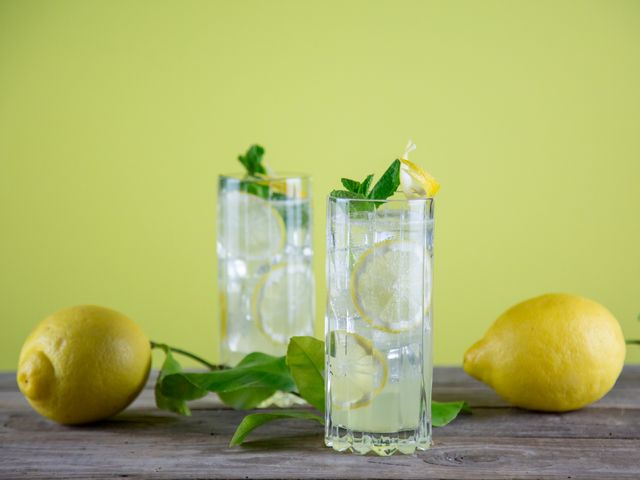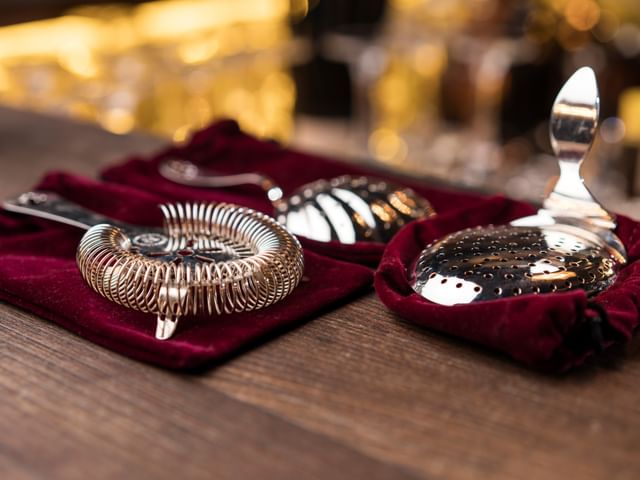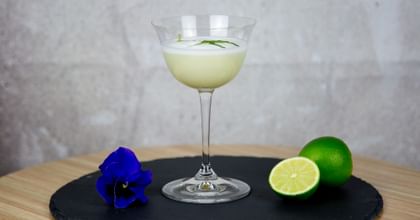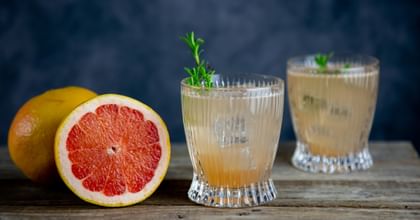Become the Expert
Five Tips for Professional Cocktails at Home

Making great cocktails at home doesn’t need to include flipping glasses or setting cocktails on fire! We’ve pulled together five easy tips to help you master cocktail making, covering the basics of bartending to ensure you can create cocktails at home with the utmost professionalism.
.jpg)
Ingredients are key
An experienced bartender will tell you that simple cocktails are harder to master than complex ones, because there isn’t any room to hide. If your cocktail only has one or two ingredients, then the quality of these ingredients needs to be utmost – and this starts with the spirit itself.
Cheap spirits use lower quality or even synthetic ingredients, and more industrialized methods to shortcut and cheapen the manufacturing process. As an example, rum should be distilled using freshly pressed sugarcane juice. Distillers can substitute this with molasses to make production cheaper, but aficionados will be able to taste the difference – as will your head the next morning.
In addition to this, you’re always going to get a better result using fresh fruit or herbs over frozen or packaged substitutions. A great insider’s tip for cocktail making for beginners is to prepare and store a homemade sugar syrup, which will improve the balance of your cocktail when compared to one that is premade. It’s incredibly easy to do: simply boil down a ratio of 1:1 white sugar and water (or 2:1 if you’re after something richer)!

Don’t underestimate the ice
If you’d be unimpressed to order a cocktail at a bar and have the bartender tell you, “here’s one I prepared a while ago”, then you know the importance of temperature when it comes to your cocktails.
Glass is not a good conductor of temperature so chilling your glassware might look fancy but it doesn’t do much to keep your drink cool. Plus, who has this much room in their home fridge?! The best way to cool your cocktail is to shake it vigorously with ice, and you can use regular homemade ice as it doesn’t need to be pretty. This process also adds a necessary amount of dilution to spirit-dominant cocktails.
One of the latest crazes when it comes to ice is the large format, crystal clear blocks that add a massive wow factor to your drinks. But it doesn’t only look good: as it melts so slowly, it will keep your drinks cool without diluting them. You can either purchase some large format trays to freeze your own at home or go the whole way and invest in some professionally made blocks that’ll take your bartending for beginners to the next level.

Great glassware is about more than presentation
Have you ever wondered why martinis are presented in V-shaped cocktail glasses and negronis are served in tumblers? It’s not just for appearances – cocktail glasses are designed to highlight the features of different drinks.
A neat glass should have a small capacity so it can hold as little as a single shot of spirits (30ml / 1oz), with or without ice, and still allow the drinker to enjoy the aromatics. On the flip side, a highball or long drink glass is designed with tall sides to keep mixed cocktails effervescent. When it comes to the typical martini or cocktail glass, these open-mouthed glasses help to release some of the heat and intensity of spirit-lead drinks. So, it’s not just about the look: each glass serves a specific purpose and will work with or against your homemade cocktails.
In 2019, RIEDEL introduced a new collection of barware glasses in collaboration with North American spirits specialist Zane Harris, which answers the need for professional cocktail glassware in homes. The RIEDEL Drink Specific Glassware series now includes nine glasses perfected to cater to thousands of cocktails, and each glass gives specific attention to its size, shape, volume, and capacity for ice. Check them out below, or click here to browse the full collection.

Stock up on the right equipment
Sure, you could stir your cocktail with a chopstick and muddle with a rolling pin, but who are you going to impress pulling out an old tea strainer to strain your margarita? The quickest way to make it look – and make you feel – like you know how to bartend, is to stock up on a couple of basic tools.
- Shaker: from a margarita to a gin fizz, a shaker will vigorously mix your ingredients while cooling when shaken with ice.
- Mixing glass: while you may think a shaker will cover all your bases, a mixing glass allows you to gently stir your cocktails while controlling the amount of dilution from ice.
- Jigger: nothing will ruin your cocktail quicker than incorrect measurements! The essence of every great cocktail is perfecting the balance of flavor.
- Muddler: following on from our note about the importance of fresh ingredients in your cocktails, a muddler is your go-to for extracting flavor and aroma from fruits and herbs.
- Bar spoon: this extra-long and extra-thin spoon is ideal for reaching down into your mixing glass, and many cocktail recipes will ask for a “bar spoon” measurement that is tough to get right without one!
- Strainer: this tool isn’t just about separating your cocktail from ice. Unless you want your guests finding a quarter of muddled lime in their caipirinha, a strainer is a must.
Learn your ratios to start experimenting
Whether it looks like they are following rules or breaking them when they mix something incredible for you behind the bar, experienced bartenders understand that timeless cocktails respect a fairly strict ingredient ratio. Knowing these ratios will allow you to begin experimenting with your own creations, as they are based on balance of flavor between spirit, sweet, and bitter or sour.
One of the easiest ratios to follow is 2:1:1 – 2 parts alcohol to 1 part sweet and 1 part sour. Classic examples of this in practice include the Whisky Sour (whisky, sugar syrup, and lemon) or the Caipirinha (cachaça, cubed sugar, and lime). Over or under pour one of these elements and you’ll end up with something that is too boozed, sickly sweet, or mouth-puckeringly tart. Look at the composition of a great cocktail the next time you’re out and you’ll find this ratio appearing again and again.
Once you understand how this balance works, you can begin to play around with your ingredients. How does substituting lemon for lime change your cocktail? How does the aromatic profile change if you add a dash of bitters? All of a sudden, the world of cocktail making will open up for you.
Locations
.jpg)

